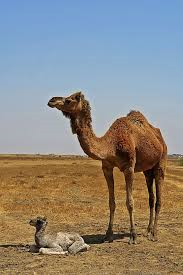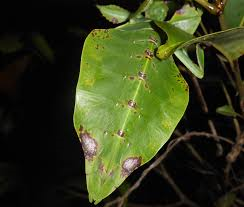Adaptations
The hardfork 20 has caused changes to the steemit platform leading to our adaptations to the changes.
The initiate stage of adaptations can be hard as changes can threaten our comfort zone but it can lead to positive outcomes when we take it positively.
In nature, adaptations are necessary to cope with the change of environment, basic needs as well as survival from predators.

This short article is going to discuss about some facts of adaptations that we can share with our students and children during outdoor experience like a zoo trip.
Two major types of adaptations
There are two major types of adaptations. They are structural adaptations and behavioural adaptations.
The physical characteristics of what a living thing has to help it to survive in its living environment are known as structural adaptations. The streamlined body shape of a dolphin’s body enables it to move quickly through the water.

The unique ways of how an organism reacts to survive in its natural habitat are known as behavioural adaptations. Meerkats would warn other meerkats when danger is near by raising an alarm during a lookout.
Adaptations to heat
Desert fox has large ears to lose excess heat to survive in the desert while many desert living things would avoid the heat from the sun by staying underground or under a shade during the day.

Many of these animals will come out to hunt for food at night when the temperature is cooler.
Since water is limited in the desert, some animals will get water by eating leaves or fruits from plants that they can find.
Animals like camels will sweat and urinate very little to retain as much water as possible in their bodies to survive in the desert when water is not able to be located easily.
Needle-like leaves of cacti reduce the surface area of the leaves greatly leading to less water being lost to the environment. Cacti have thick stems that can store water for use during dry season.
Adaptations to low temperature
The closely packed feathers of penguins can trap air that keep their bodies warm.

Polar bears have thick fur as well as a thick layer of fat to keep them warm to survive the extreme cold environment.
Humans wear thick clothes in extreme cold environment to keep ourselves warm.
Adaptations to conserve energy
Some animals like squirrels and bears will hide and rest during winter to conserve energy to survive in the cold season.

Many of the animals in cold environment may enter into torpor which allows them to enter into a low-energy resting state.
Tent-making bats require a lot of energy due to their fast metabolism and strong flight muscles.
Their food sources can often be difficult to find and they can starve without food for more than 1 day so they need to conserve energy while they are resting by periodically reduce their heart rate leading to saving energy.
Adaptations by camouflaging
Many living things camouflage to blend with their environment to hunt for food or hide from their predators.

Predators like tigers can blend with the tall grasses to hunt and catch their prey easily.
Leaf insects can camouflage themselves to look like leaves with their body shapes and colours.
A pygmy seahorse can blend itself with the water plants to escape being seen.
In conclusion
There are many other adaptations that are not mentioned in this article. Living things have strong adaptation abilities to cope with our living conditions for survival needs.
We can definitely progress and survive as steemit progresses into the next phrase of hardfork 20.
The return of all the regular articles as well as the return of support are great adaptation abilities of steemit members.
Raising our children and students with the awareness of our natural abilities to adapt for survival can lead them to become resilient during hard and challenging times in future.
Reference:
Evenari, M. (1985). Adaptations of plants and animals to the desert environment. Ecosystems of the World.
Danks, H. V. (2005). Key themes in the study of seasonal adaptations in insects I. Patterns of cold hardiness. Applied Entomology and Zoology, 40(2), 199-211.
Alcock, J., & Rubenstein, D. R. (1989). Animal behavior. Sunderland, MA, USA: Sinauer Associates.
Danks, H. V. (1991). Winter habitats and ecological adaptations for winter survival. In Insects at low temperature (pp. 231-259). Springer, Boston, MA.
Messel, H. (Ed.). (2014). Abridged Science for High School Students: The Nuclear Research Foundation School Certificate Integrated. Elsevier.


Disclaimer: This is my personal reflection and I am not in any position to instruct anyone what they should do. I am not responsible for any action taken as a result of this post. My post can only be a reference for your further research and growth. By reading this post, you acknowledge and accept that. All images and pictures were taken from google images that are free from copyright under labelled for reuse.
Posted from my blog with SteemPress : http://fun2learn.vornix.blog/2018/10/18/adaptations/